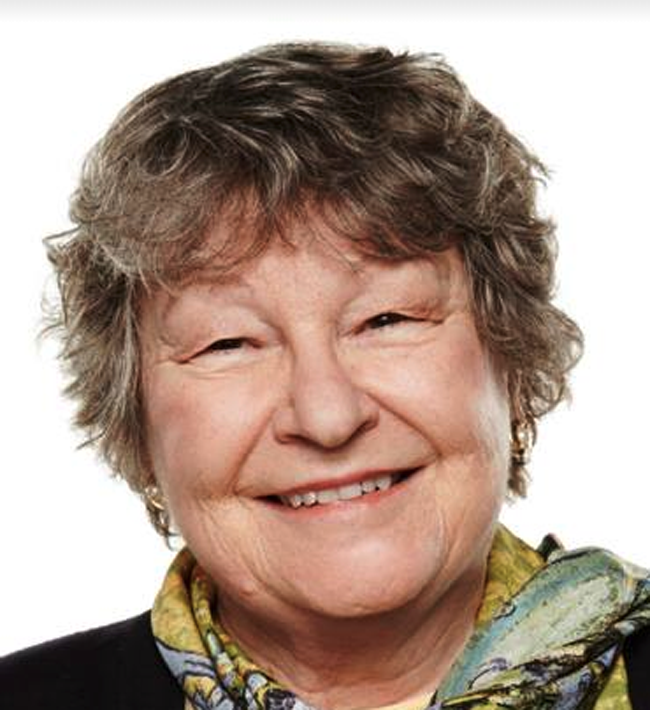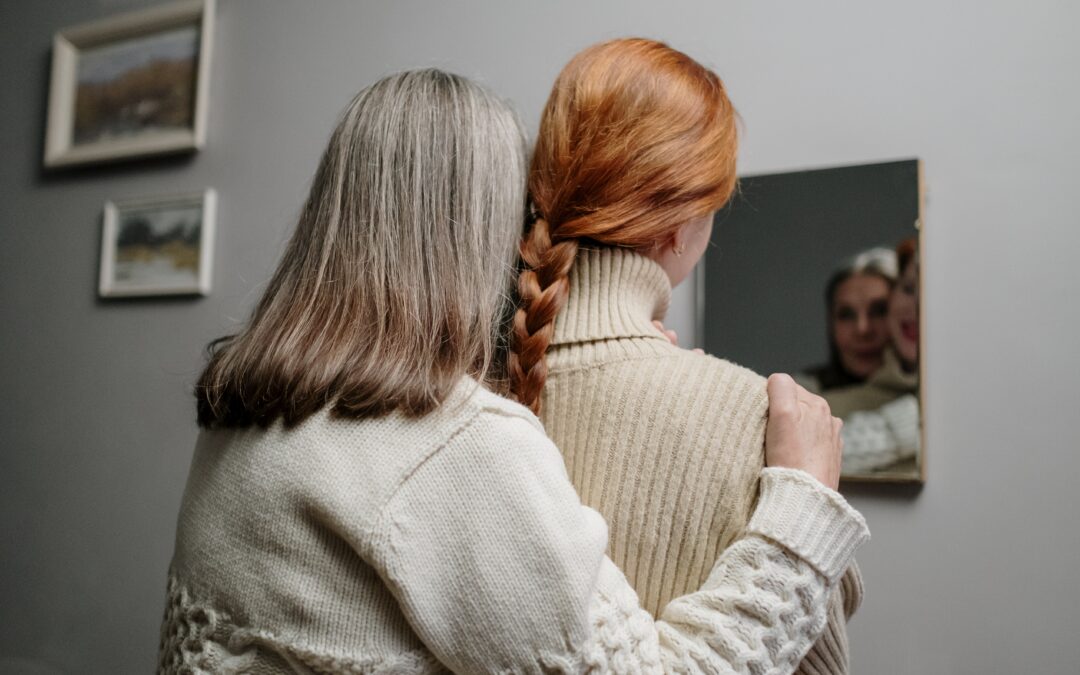We hope you tuned in to EWTN recently for a chance to hear Onalee McGraw, founder of the Educational Guidance Institute (EGI), speak about natural law and the impact of the Production Code on classic film. If you did not, and you’re wondering what “natural law” and “Production Code” mean, take a look at our extended interview with Onalee. Here she talks EGI’s founding, natural law, the Golden Age of Hollywood, censorship, and more.
1. Tell us a bit about yourself and why you began developing these study guides.
Having grown up in the postwar era, I was blessed to receive a classical, public school education when such a thing was the norm. In the cultural atmosphere of that time, we had a working (if imperfect) moral consensus and general awareness of what was on the better side of human nature and what was not. At the age of seven, when I first saw It’s A Wonderful Life at the Fremont Theater in my home town of San Luis Obispo, California, I became hooked on movies. Most of us back then experienced these movies as entertainment, and it was only many years later by studying Jacques Maritain, C.S. Lewis, and Peter Kreeft, among others, that I understood how the greatest films of the Golden Age of Hollywood were grounded in a classical view of human nature and the natural law.
In 1962, as a graduate student in political science at Georgetown University, I enrolled in a Just War seminar offered by Heinrich Rommen, who had fled Nazi Germany in the 1930’s following arrest by the Gestapo. Dr. Rommen shared his experience as a soldier in World War I, where he found himself gazing into the eyes of a French soldier from across the trenches – and neither one of them could fire. He explained this knowing exchange as an example of what philosopher Jacques Maritain called “connatural knowledge,” a mutual recognition that both men were made in the image and likeness of God. Until then, I had considered myself a “free thinker,” skeptical of objective truth. And yet, Dr. Rommen had given me this indelible image of one French and one German soldier who saw the truth in each other’s eyes that they were brothers and sons of God.
Later in November of 1980, as an education researcher at the Heritage Foundation, I appeared on a segment of The Phil Donahue Show to debate the liberal education theorist Howard Kirchenbaum, a proponent of the then-popular “values clarification” methodology sweeping our nation’s schools. During the debate, I explained how the teaching of classic stories like A Tale of Two Cities far exceeds values-clarification, which sought to take a “value-neutral approach” by defining values themselves as subjective, personal, and relative. This incident bore on my later discovery that classic films’ storytelling contain persuasive and compelling portrayals of human nature that can reach human hearts and teach objective truth. In 1986, I co-founded EGI and received three federal grants to develop and pilot educational programs for middle and high school students. In 1992, I started focusing on classic film study as an educational tool to introduce transcendent goodness, beauty and truth to young people. The students demonstrated Maritain’s thesis: that our minds, hearts, and souls are made to grasp reality connaturally through our God-given faculty of imagination.
2. What is the timeline of Hollywood’s Golden Age and what sets it apart from the rest of film history?
“The Golden Age,” according to cultural historian Thomas Doherty, marks the Golden Age as “beginning under the reign of the Production Code” in 1934 and “ending with its demise” in the mid-60’s. Robert Osborne, when he was host of Turner Classic Movies, always said it spanned the 30’s, 40’s, and 50’s. I usually paraphrase from Doherty and say it started in 1934 when the Code became operational and continued up to the early 60’s. The Code was officially changed as late as 1967, but the years from 1960 were very hard and the Code was pretty much in shreds by that time. Yet the era ended in 1966 with A Man for All Seasons. I think to myself, God worked the miracle to get the moguls to buy into this “philosophical natural law-based Code written and presented to them in 1930, and then in “The Storm of ’34” – discussed in The Dame in the Kimono and Doherty’s book – all the elements of culture, politics, personalities, and movie-making came together to establish of Production Code Office run by Joseph Breen from 1934-1954.
This was a time of national unity, with strong leadership from Catholic bishops, ingenuity and stewardship among priests, and a healthy press as well as ecumenical agreement among Jewish, Protestant and Catholic cultural leaders as to what was good and healthy in the movies and what was not. The studio moguls knew they needed to cooperate with Breen and the Production Code Office, or the Legion of Decency boards would hit them even harder. Despite the guarantee of money and success which motivated studio moguls to support the Production Code Office, there existed a distinctive subculture in Hollywood that acted the way a genuine culture or a healthy culture does – guided by morality, artistic integrity, and an appreciation of excellence. After Breen retired in 1954, the Code Office was managed by Geoffrey Shurlock, and he did not have a strong operational knowledge of natural law. That is the key – knowing how the natural law works, how it reveals the truth of human nature, and how we need to work within its boundaries for earthly and eternal happiness.
3. You’ve often mentioned how the Production Code, shaped by the natural law, sought to produce an experience of “integrated reality” for the moviegoer. What did this mean for moviemaking?
Another way to understand the natural law is that it is virtue ethics in action, and central to this is the idea that we can all come to know the truth. Dickens, Dostoevsky, Jane Austen, and classic authors demonstrate this in the form of poetic truths about the human condition, which their characters embody through their stories. Directors like Frank Capra understood this as well. So, in the greatest of the Golden Age films and great films after that, you have a big picture view of life where the characters and storytelling help us to understand what virtue ethics in action looks like. These are “integrated realities” which make human nature and virtue ethics visible. Golden Age films portray men and women falling in love, people developing deep friendships, and working together as a community for the common good. We see people discovering the meaning of justice, politicians being called to civic virtue.
These are stories where good and evil are confronted, where characters exhibit human strengths and weaknesses to which we can relate. Any excellent movie appeals to the moviegoer’s moral imagination through the unfolding of its themes, characters, and dialogue. Each viewer, despite his or her own lack of virtue or negative experiences, has the chance to experience something that’s true to the human condition, and their participation in its aesthetic and poetic goodness serves as an invitation to virtue. Modern movies turn moviegoers into mere observers to be entertained, distracted, and confirmed in the lie that they are autonomous selves rather than participants with moral imaginations ultimately destined for community.
4. Some consider the Production Code, with its guidelines and restrictions for portraying certain subject matter, an affront to artistic license. What is your rebuttal?
According to postmodernists, all of reality is constructed and subjective. Carl Trueman’s recent book, The Rise and Triumph of the Modern Self, speaks to the claim that we are self-determining, autonomous selves. In a similar way, critics of the Production Code and the operations of the Production Code Office may argue that censorship is wrong because they claim that the only reality is the unlimited freedom of the autonomous self. In fact, there is no better battle ground for refuting the false anthropology of the autonomous self than in the world of classic film.
In this world of classic film, liberals and conservatives, ordinary moviegoers and today’s artists proclaim the films and filmmakers of the Golden Age to be the very best. So if people left, right, and center, moviemaker and moviegoer all proclaim that these films made under the reign of the Production Code are great, then critics of the Code are stuck with the fact that these films were made in a particular cultural and historic place and time they find suspect. What is there to say, except that there are no great movies celebrated by people of all backgrounds where the characters are autonomous selves with unlimited freedom, as those devoted to values-neutral relativism would have it.
5. Why are these movies important for us to see as 21st-century advocates of family, marriage, and sexual integrity?
We know that all human beings naturally long for the goods of friendship, community, marriage, and family. But since the philosophy of the autonomous self stands powerfully today against the truth about committed love in marriage and family, we must share stories that model it. We must model it ourselves and especially by showing classic films where the cultural fruits of marriage and family life are apparent, because these are concealed by an industry and culture that claim that we are self-determining autonomous selves rather social beings with the power to love. For young people today who haven’t experienced the full thriving of normative understandings of community, love, marriage, and family, Hollywood’s Golden Age stands as their greatest recent cultural legacy. No single scene, performer, or film lays full claim to it, but the greatest of them together tells an indisputable story of human nature as it is, along with the stories, myths, fairy tales, novels, dramas, and movies that human beings have made since the beginning of time.
Today’s culture tells young adults that self-constructed identity is what matters, but rarely that moral decision-making is the essence of the good life. The great films almost always present a moral choice between freedom and fatalism, solidarity and indifference – something young men and women need to hear so they do not simply drift along in this postmodern culture, but actively search for truth in community with others, whether with friends or with someone they can love and marry in full, authentic freedom. Your students are likewise called not to be autonomous selves, but to be with and engage one another and those they know on campus. Golden Age movies can help bring these realities to the surface of consciousness, so that even the most woke, confused, and wounded among us can enjoy the good things they are made for.







